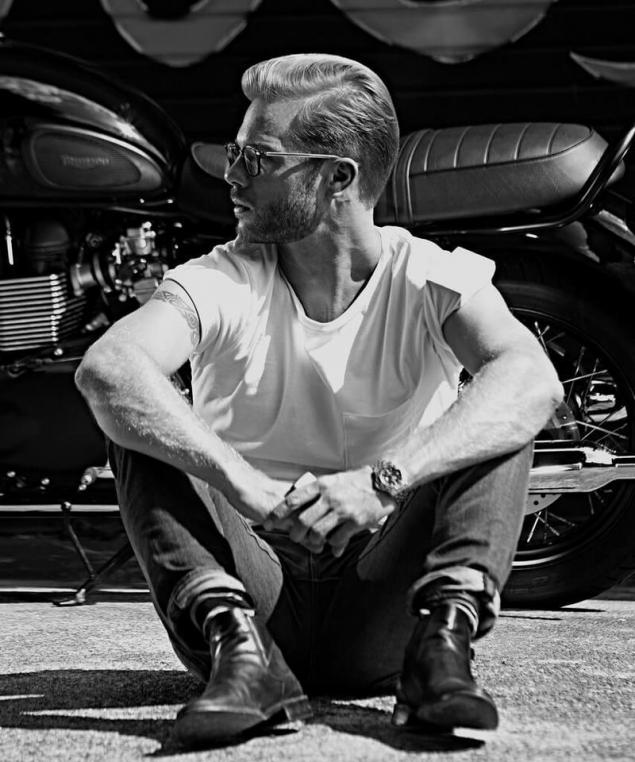1126
How to test the business idea on prochnost- 5 surest ways
1. Lean-method
Principles of lean-methodology that explains how to create a product, spending a minimum amount of resources can be found in the classical works of Eric Rice The Lean Startup. In it, he, among other things, talks about how worth checking the viability of ideas.
Rice obsessed with mini-checks and iterative movement. The very first proof of concept must not only prove that your product is of interest to buyers, but also that they would be willing to pay for it. Even before the creation of the minimum version of the product (MVP), he advises to place a simple Internet landing page to which the link leads to the advertisements. On the page there should be a brief description of the product and the button "Buy". You can do a lot of landing pages options, varying the price and nature of the proposal. Gather statistics, we can already begin to develop a prototype.
This principle refers to Rice: "Please ask - then do it." To test the ideas of the followers of lean-method also often use The Validation Board - free product, which is lined with the board, each of which represents an important element of a successful start-up ideas
.
2. Test Disney
Walt Disney used in his work method of testing the ideas, which he called Imagineering - a cross between imagination and engineering (Eng .: imagination and development - Note H & amp;. F.). By this he meant the process of "grounding" of fantasy, turning them into something realistic and possible.
Work on the idea to require consideration of it from three different perspectives: the dreamer, the realist, critic
. Dreamer is full of a variety of ideas, desires, images, and does not meet on the way are no barriers. At this stage, there is no censorship, nothing is considered too absurd or stupid, here everything is possible. To take the position of the dreamer, you can ask yourself: "If I had a magic wand, what would I do?»
Realist transform visionary ideas into something practical and probable. He asks questions about how you can make it work, what parts is the job, what is its meaning to that of the existing one, it seems.
The critic considers the idea from the point of view of their shortcomings. He asks the question: "What I really think about it? It really is the best option of all possible? What can I do to improve it? »
Among the Disney team worked on ideas, gradually moving from room to room. Each room has its own function: the first - it was possible to dream, in the second - to create an outline in the third - allowed fiercely criticize everything. Often the project again returned for revision in the first or second room. The idea was considered accepted when in "room critics" Nobody said a word.
3. Test the first mile
Founder Innosight Scott Anthony in his book The First Mile writes about how his company usually check the strength of the idea.
First conducted a careful analysis of what has already been created in this area, study the experience of competitors, check the patent applications.
Then arrange a thought experiment, answering the questions: "How will the world look like if the idea will succeed? What does it change? Which companies will enter into competition with us? What are the challenges we will face? For example, what do we do if our chief developer go away from us? »
The third step is to build a model of monetization "by eye": it is necessary to determine what is the size of the potential audience of the future product, how much it will cost, how often it will buy, as it takes time to reach the break-even point.
The fourth stage is connected with calls. Anthony says that success is often associated with the idea of the existence in our mind certain assumptions and ideas about how the world works. Check them can only make one call. For example, if your idea is to deliver healthy meals to universities by making one phone call, you will be able to know that such issues are usually resolved through a tender procedure, which takes place three times a year.
The next step is to obtain some evidence that consumers need your product. This may be a "coffee-test" when you ask friends honestly tell you what they think about your idea, in return for what you pay for their coffee. It can be "cold" on the basis of a survey of potential customers or data survey, made using SurveyMonkey.
4. A 10-second test
Janet Kraus is now teaching at Harvard Business School, and previously founded several successful companies (among them - Circles and Spire). His students she tells about 10-second test, which she uses every time the head it comes to the idea of a startup. It asks the question: Is this idea oxygen, aspirin or jewelry to potential customers
? Oxygen is related to the products that are integral to a necessity of life, like food, clothing, ritual services. The requirements may be both in individuals and organizations have. In general, it is something without which they can not function normally.
Aspirin - this is what saves us from pain and make life more bearable, though not related to immediate survival. For example, coffee - life without it is possible, but not so pleasant
. The concept of "jewel" for products and services that can be considered a luxury surplus. For example, desserts, movies, video games and other pleasures associated with the holiday.
Kraus said that really a good idea to start-up must satisfy all three requirements. And most importantly in this test - to be honest with themselves and quickly recognize that one or more components in your idea is not
. 5. The method of Edison
Thomas Edison left behind a patent in 1093, among which were the invention as light, typewriter, phonograph, battery and camera. Also after 3500 it left the notebooks in which he obsessively record every thought occurred to him.
Researchers try to understand the secret of creative productivity Edison, identified several features of its methods of working with ideas.
Edison's first rule - number. Myself and the staff of his company, he established the so-called quotas invention. His own quota: one minor invention every ten days and one large - every six months. To test this principle in itself, imagine that you are given the task to come up with all the ways of the alternative use of brick. On average, ordinary person offers six to eight options. Now imagine that you were asked to come up with 40 ways to use a brick. Due to the given quota, your head will start to work differently.
The second principle - for Edison there was no such thing as a failed experiment, in his view, all these "trial and error" methods of preparation have been good experiences. To invent a battery, Edison spent about 50,000 experiments. For light bulbs - 9 000. After each failed experiment he wrote down what he learned about the new subject. He perceived the creative process as the heavy, monotonous, honest work. According to him, the first ideas are always weaker than the next because first you are repelled by the usual things and you are holding back your imagination.
The third principle - never rest on our laurels, to continuously improve ideas and experiment with their application in various fields. The Edison museum survived a huge number of options phonographs: round, square, wooden, flat and high. All this - the results of rejected ideas. When Edison was once asked the secret of his creativity, he said, "never stopped working on the subject for as long as he does not work himself."
Principles of lean-methodology that explains how to create a product, spending a minimum amount of resources can be found in the classical works of Eric Rice The Lean Startup. In it, he, among other things, talks about how worth checking the viability of ideas.
Rice obsessed with mini-checks and iterative movement. The very first proof of concept must not only prove that your product is of interest to buyers, but also that they would be willing to pay for it. Even before the creation of the minimum version of the product (MVP), he advises to place a simple Internet landing page to which the link leads to the advertisements. On the page there should be a brief description of the product and the button "Buy". You can do a lot of landing pages options, varying the price and nature of the proposal. Gather statistics, we can already begin to develop a prototype.
This principle refers to Rice: "Please ask - then do it." To test the ideas of the followers of lean-method also often use The Validation Board - free product, which is lined with the board, each of which represents an important element of a successful start-up ideas
.

2. Test Disney
Walt Disney used in his work method of testing the ideas, which he called Imagineering - a cross between imagination and engineering (Eng .: imagination and development - Note H & amp;. F.). By this he meant the process of "grounding" of fantasy, turning them into something realistic and possible.
Work on the idea to require consideration of it from three different perspectives: the dreamer, the realist, critic
. Dreamer is full of a variety of ideas, desires, images, and does not meet on the way are no barriers. At this stage, there is no censorship, nothing is considered too absurd or stupid, here everything is possible. To take the position of the dreamer, you can ask yourself: "If I had a magic wand, what would I do?»
Realist transform visionary ideas into something practical and probable. He asks questions about how you can make it work, what parts is the job, what is its meaning to that of the existing one, it seems.
The critic considers the idea from the point of view of their shortcomings. He asks the question: "What I really think about it? It really is the best option of all possible? What can I do to improve it? »
Among the Disney team worked on ideas, gradually moving from room to room. Each room has its own function: the first - it was possible to dream, in the second - to create an outline in the third - allowed fiercely criticize everything. Often the project again returned for revision in the first or second room. The idea was considered accepted when in "room critics" Nobody said a word.
3. Test the first mile
Founder Innosight Scott Anthony in his book The First Mile writes about how his company usually check the strength of the idea.
First conducted a careful analysis of what has already been created in this area, study the experience of competitors, check the patent applications.
Then arrange a thought experiment, answering the questions: "How will the world look like if the idea will succeed? What does it change? Which companies will enter into competition with us? What are the challenges we will face? For example, what do we do if our chief developer go away from us? »
The third step is to build a model of monetization "by eye": it is necessary to determine what is the size of the potential audience of the future product, how much it will cost, how often it will buy, as it takes time to reach the break-even point.
The fourth stage is connected with calls. Anthony says that success is often associated with the idea of the existence in our mind certain assumptions and ideas about how the world works. Check them can only make one call. For example, if your idea is to deliver healthy meals to universities by making one phone call, you will be able to know that such issues are usually resolved through a tender procedure, which takes place three times a year.
The next step is to obtain some evidence that consumers need your product. This may be a "coffee-test" when you ask friends honestly tell you what they think about your idea, in return for what you pay for their coffee. It can be "cold" on the basis of a survey of potential customers or data survey, made using SurveyMonkey.
4. A 10-second test
Janet Kraus is now teaching at Harvard Business School, and previously founded several successful companies (among them - Circles and Spire). His students she tells about 10-second test, which she uses every time the head it comes to the idea of a startup. It asks the question: Is this idea oxygen, aspirin or jewelry to potential customers
? Oxygen is related to the products that are integral to a necessity of life, like food, clothing, ritual services. The requirements may be both in individuals and organizations have. In general, it is something without which they can not function normally.
Aspirin - this is what saves us from pain and make life more bearable, though not related to immediate survival. For example, coffee - life without it is possible, but not so pleasant
. The concept of "jewel" for products and services that can be considered a luxury surplus. For example, desserts, movies, video games and other pleasures associated with the holiday.
Kraus said that really a good idea to start-up must satisfy all three requirements. And most importantly in this test - to be honest with themselves and quickly recognize that one or more components in your idea is not
. 5. The method of Edison
Thomas Edison left behind a patent in 1093, among which were the invention as light, typewriter, phonograph, battery and camera. Also after 3500 it left the notebooks in which he obsessively record every thought occurred to him.
Researchers try to understand the secret of creative productivity Edison, identified several features of its methods of working with ideas.
Edison's first rule - number. Myself and the staff of his company, he established the so-called quotas invention. His own quota: one minor invention every ten days and one large - every six months. To test this principle in itself, imagine that you are given the task to come up with all the ways of the alternative use of brick. On average, ordinary person offers six to eight options. Now imagine that you were asked to come up with 40 ways to use a brick. Due to the given quota, your head will start to work differently.
The second principle - for Edison there was no such thing as a failed experiment, in his view, all these "trial and error" methods of preparation have been good experiences. To invent a battery, Edison spent about 50,000 experiments. For light bulbs - 9 000. After each failed experiment he wrote down what he learned about the new subject. He perceived the creative process as the heavy, monotonous, honest work. According to him, the first ideas are always weaker than the next because first you are repelled by the usual things and you are holding back your imagination.
The third principle - never rest on our laurels, to continuously improve ideas and experiment with their application in various fields. The Edison museum survived a huge number of options phonographs: round, square, wooden, flat and high. All this - the results of rejected ideas. When Edison was once asked the secret of his creativity, he said, "never stopped working on the subject for as long as he does not work himself."
























